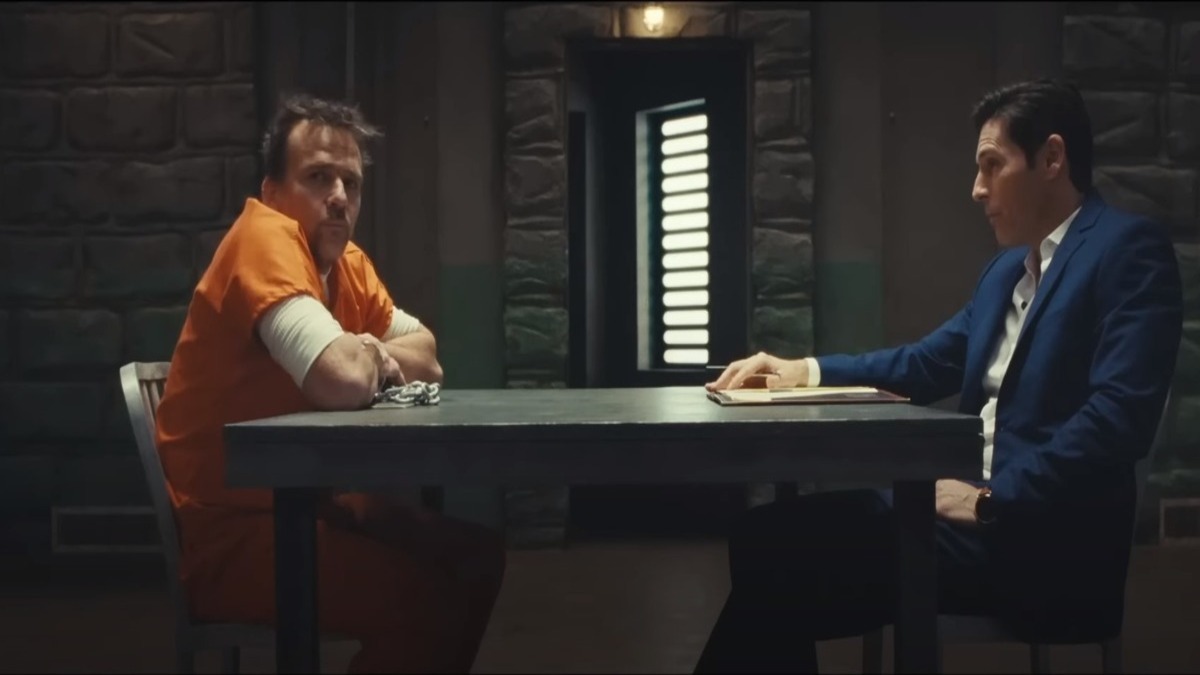Spoilers.
Nowadays, it seems like in order to create a successful horror movie that isn’t a sequel in a legacy franchise, filmmakers have to incorporate at least two of the following: gore, vulgarity, and demonic possession. The horror genre drastically over-utilizes guts, gorgons, and naked gals, typically leaving something to be desired from the writing. The genre seems to rely more on eliciting physical responses than contributing to broader cultural discourse. And in this way, horror films are more akin to amusement park rides than they are art.
This is partly why “Nefarious,” a new movie executive produced by conservative commentator Steve Deace and directed by Christian filmmakers Chuck Konzelman and Cary Solomon, is a breath of fresh air — the film actually has substance.
Based on Deace’s best-selling novel “A Nefarious Plot,” the film is set on the scheduled day of execution for convicted serial killer Edward Wayne Brady, who is required by the state of Oklahoma to receive a final psychiatric evaluation before taking a seat on the electric chair. Brady, having “incontrovertible evidence, a confession, a jury of peers, and 11 years of legal wrangling” paving the road for him on death row, may be suffering from a severe mental ailment and, therefore, ineligible for execution.
Dr. James Martin, the highly accredited psychiatrist tasked with providing Brady with an “impartial review,” approaches the evaluation with the requisite hubris of a highly credentialed millennial. But his preconceived understanding of the situation and his secular worldview prevent him from engaging with the true nature of the reality presented before him. And seeing as how Brady is very explicitly possessed by a demon named “Nefarious,” this makes a dominant theme of the film readily apparent: Evil is all around us, in both the often unnoticed ignorance of modern banality and in glaringly obvious manifestations.
In explaining the process of demonic possession, Nefarious makes clear it relies on a series of “yeses” in which an individual gradually acclimates himself to the normalization of evil. He says, “We offer up a series of temptations, gradually increasing in terms of duration and intensity, degree of moral inequity.”
The implication is that seemingly small moral infractions like petty theft and religious ambivalence pave the way for greater misdeeds by numbing our hearts and senses to the damaging effects of evil. This concept is further explored in the “three murders” Nefarious tells Martin he will have committed by the time Brady is scheduled for execution.
The twist is that these murders are products of the casual cruelty contemporary society extols as virtues. Thus, Martin wasn’t aware he had already committed two of the three; he was under the impression he was simply living life in the 21st century. Nevertheless, Martin signing off on the euthanasia of his sickly mother — granting her “death with dignity” — and pressuring his girlfriend to abort their child because he isn’t “ready to be a father” are both tacit acts of killing.
When forced to confront his immorality and the evil nature of his actions, Martin recites what may as well be the Nicene Creed of liberalism, protesting, “This is my life. I can live it the way I want.”
Throughout the psychiatric evaluation, Nefarious reveals to Martin that his goal is to spite God by using man’s free will to usher in an era of darkness so his master can become the metaphysical hegemon. Subsequently, “Nefarious” serves as a sort of inversion of the Passion story in which the eponymous demon acts as the “dark messiah.” Nefarious, a dark spiritual being, forcibly inhabits a body that is not his own and uses it to wreak havoc and cause misery. Nefarious also makes clear to Martin that he needs him to commit Brady to death so the demon’s spiritual form may be unleashed to usher in an era of demonic rule; an innocent man must die for the damnation of us all, so the story goes.
It just so happens that after being thoroughly creeped out and violently strangled by Nefarious, Martin is convinced Brady is the one behind everything, is a dangerous madman, and the world would be safer without him in it. Signing off on Brady’s psychiatric evaluation, subsequently indicating he is mentally fit to stand execution, Martin commits his third murder and may or may not have ushered in the end times; we are left to wonder.
What makes “Nefarious” such a fascinating movie is that it uses outlandish means to make heartfelt and relatable pleas about our culture’s spiritual woes. It is undeniable our civilization is currently enduring a crisis of faith, causing people to become rudderless and dependent upon self-actualization and charlatans for deeper meaning.
Too often, we lack the vocabulary to engage in meaningful conversations about this very topic. So, despite it being crucially important, we simply don’t discuss it. But just as often, where words fail, art succeeds, and “Nefarious” is the rare horror film worthy of being called art partly because of its ability to adeptly address truly existential cultural woes.
“Nefarious” hits theaters across the country on April 14.









